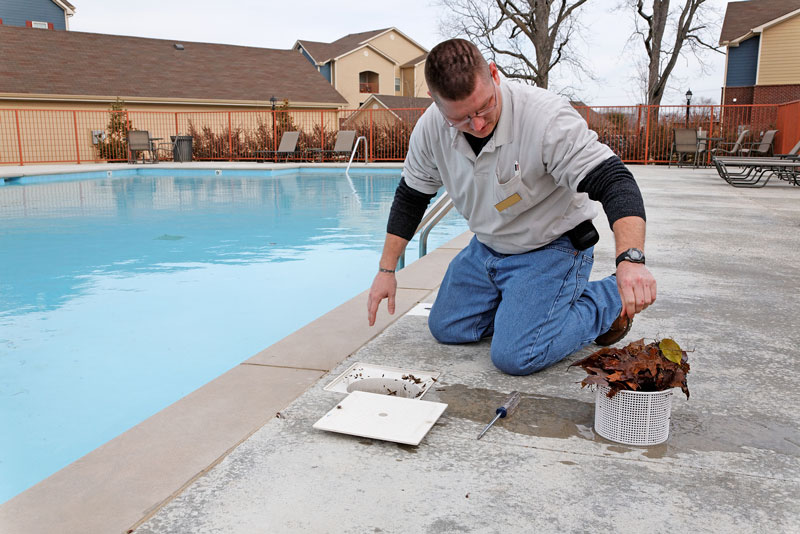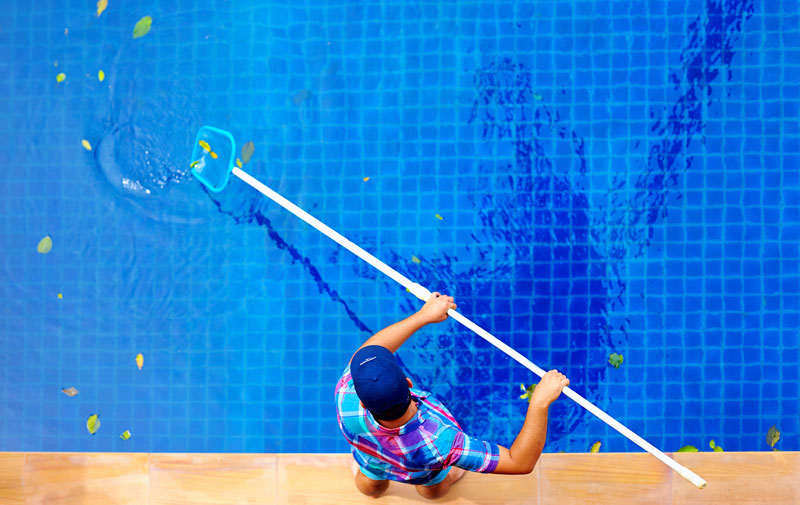The Tara Pool & Outdoor Products Blog
How to keep your liner looking beautiful
A vinyl pool liner is a strong, beautiful finish for your pool. Taking proper care of your vinyl pool liner will greatly add to the beauty and life of the liner. It's important but not difficult to care for a vinyl liner.
Be careful with pool chemicals
 1. Make sure the chemical balance is checked regularly. A heavily used pool should be checked more often. Do not overdo it when adding chemicals to the pool. Maintaining a proper balance has a significant effect on the liner as well as many of the other pool components. We recommend keeping your ph within the 7.4 to 7.8 range.
1. Make sure the chemical balance is checked regularly. A heavily used pool should be checked more often. Do not overdo it when adding chemicals to the pool. Maintaining a proper balance has a significant effect on the liner as well as many of the other pool components. We recommend keeping your ph within the 7.4 to 7.8 range.
2. Never cover your pool after adding chemicals. You should wait at least 24 hours and check to make sure the water is balanced before covering your pool. Swimming pool covers, especially solid and automatic pool covers, create a closed environment. Chlorine concentrations can build up beneath the cover and cause the liner to absorb water and wrinkle.
3. Make sure the circulation system is “ON” long enough to get good, daily filtering. This is an important factor in keeping the chemicals mixed thoroughly for good balance. It may take several hours to filter the pools volume of water, depending on the size of the pool and the filtering system.
4. Avoid using a floating chlorinator in your vinyl liner pool. They can become stationary in the pool and release high concentrations of chlorine in a small area causing the pattern on the liner to become bleached out, losing its color. This could happen at any time; even while the pump is running.
5. If your using a salt water generator, make sure you monitor your system regularly and keep it in the range below 3 ppm free chlorine. If left unchecked, chlorine levels can become excessive due to air temperature, precipitation, lots of people using the pool, etc. You should avoid excessive chlorine levels, especially over long periods, of time because it can cause a liner to absorb water and wrinkle.
Regular cleaning is always important
 6. Skim the surface of the liner daily. This keeps debris from sticking to the bottom or collecting along the wall of the pool. Leaves and other debris can cause stains if they are allowed to collect on the surface of the liner for too long.
6. Skim the surface of the liner daily. This keeps debris from sticking to the bottom or collecting along the wall of the pool. Leaves and other debris can cause stains if they are allowed to collect on the surface of the liner for too long.
7. Brush the walls, ladders, and corners twice a week. This practice helps minimize algae buildup. By brushing the algae into the water, you allow your sanitizer the opportunity to effectively eliminate it. Common substances such as body oil, sun tan lotion, and baby oil often accumulate at the waterline. When these substances are exposed to sunlight and high temperatures, they can sometimes discolor and become tough to remove from the vinyl. We recommend wiping the liner clean once a week using a soft cloth and pool water. For more stubborn stains, consider using a gentle cleaner. We offer a Tile and Waterline cleaner on our online store, specifically formulated for such purposes. Check it out at our online store.
8. Do not use abrasive cleaning tools, such as steel wool, sharp bristled brushes, scouring pads (such as Magic Eraser), etc. We recommend using alkaline base cleaning agents for cleaning the area above the water line. Acid base chemicals can leave a residue which causes the vinyl to dry out.
The right tools make a big difference
9. Using an automatic pool cleaner can be a simple way to keep a pool clean. It’s important to use it properly, though. “In general, using a robotic cleaner two to three times a week during normal, temperate weather for about two hours is all that’s needed to maintain a clean pool.” (Aqua, April 2017) Excessive use should be avoided. Excessive rubbing of the cleaner against a vinyl liner can be abrasive enough to cause the pattern to wear off of the vinyl.
10. Use equipment which is designed specifically for use in a vinyl liner pool. Keep all equipment in good condition. Replace any badly worn or defective parts before continuing use in the pool. For example, a vac head with missing brushes may cause a wrinkle to form in the liner and possibly tear the liner if the suction is strong, and if the vac head remains in one spot for a long period of time.
When you subscribe to the blog, we will send you an e-mail when there are new updates on the site so you wouldn't miss them.
